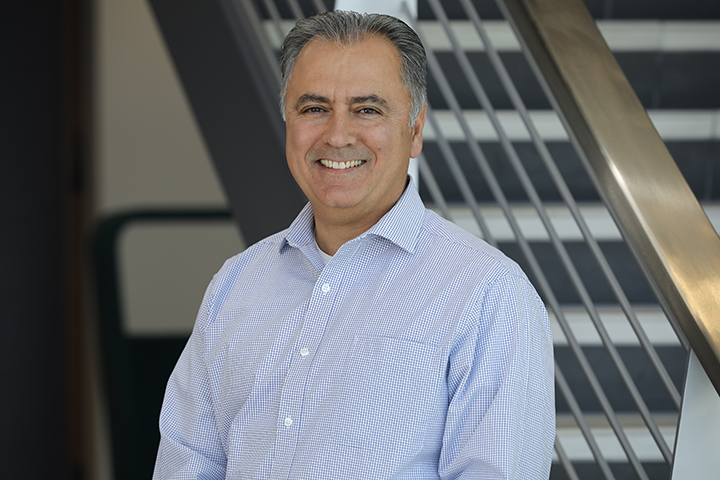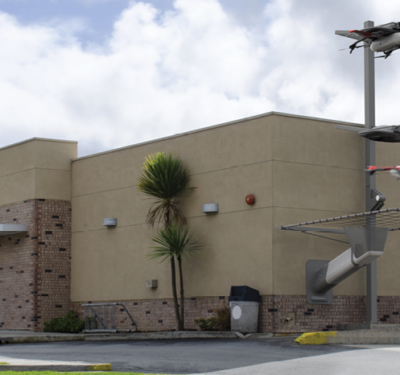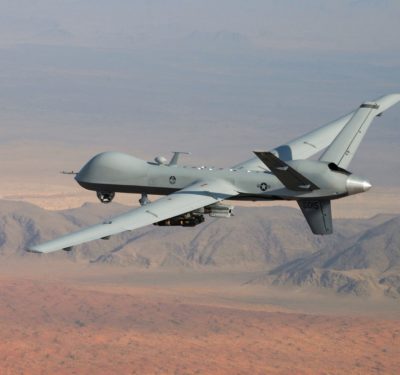CEO Q&A: INNOVATION, CULTURE AND EXECUTION
Witty, wry and informative, sporting a neat but substantial shelter-in-place beard when we speak, Wahid Nawabi has literally traveled the world to serve as AeroVironment’s president and CEO.
Leaving Soviet-era Afghanistan when barely in his teens, Nawabi shepherded his sisters to safety. Arriving in the U.S., he spoke just three or four words of English. Smart enough to attend MIT, he left to join a startup—to the consternation of his mother. Over time, he grew businesses at various internet, information and energy companies. Nine years ago, he joined AeroVironment, assuming its leadership in 2016.
Since then, Nawabi has guided the company as it continues to field numerous innovations and generate a most recent full-year revenue of more than $367 million dollars. As our conversation revealed, he, and AeroVironment, are far from finished with twinning innovation and growth.
IUS: Please describe your path to AeroVironment.
NAWABI: I never really had any defense experience; I’m an electrical engineer. I spent the majority of my career with an MIT startup; AeroVironment reminded me very much of that firm. That’s why I was attracted to AeroVironment: the values, the vision, the mission, the founder and the cause.
IUS: How would you define the AeroVironment culture?
NAWABI: it started with the founder [Dr. Paul MacCready Jr.]. He was a world-renowned innovator—he was named “Engineer of the Century” by the American Society of Mechanical Engineers.
We decided to focus on innovation and agility. Innovation means we have to invest in R&D, and we invest more than 30 percent of our annual revenue when internal-funded and customer-funded R&D contributions are totalled. Agility means the ability to act fast and be nimble, flexible. Today, I’d say 70 percent plus of investment is on real new products and about 30 percent is on experimental things that we don’t even know if they’re going to work. But it’s worth pursuing moonshots.
IUS: And how about the people in it?
NAWABI: We tend to attract people who come from Silicon Valley-type backgrounds more than the aerospace and defense industry. We give them a lot of leeway for experimenting and trying and failing fast and learning from it.
We allow them to work on their personal projects. I had an admiral here, and we were showing him around and there’s a tiny little UAV flying over his head, and his security guards got really worried. So, a culture of fun, a culture of care.
IUS: How do you strategize your direction?
NAWABI: I say this to our investors too: we target potential markets and trends that are much, much bigger than our size. We attack them with a very transformative, innovative, disruptive solution. And we couple that with agility, and go there fast and first, and then build what I call a franchise that we can then harness for decades. Our goal is to have a multiple of these at any given time.
In our process, we have an overarching vision and mission. And then we rank-order, in a risk-adjusted manner, our priorities and opportunities to achieve those. That drives our decisions for capital allocation, investments, and then priorities internally for operations and engineering. There’s a lot of what I call methodical process related to scientific tools, but there’s also collaboration and subjective judgment that comes in at the end. Fortunately, we’ve made almost all the right choices and decisions, as you can see from our results.
IUS: Can you outline your product development process?
NAWABI: Our offering is a system solution: we provide the UAV, the sensor, the communications station, the GNSS, the training, the services, the spares, the support, even on-site. We do all the design and core competencies in-house. It’s a little bit like the Apple model.
Early in the development of an innovative solution, we have to invest a lot more in R&D, because the customer just doesn’t know how it works. As soon as we get to a technical readiness level, we demonstrate and say, “Yeah, this is possible.” NASA’s Mars helicopter was a perfect example. They didn’t believe that flight in that kind of an atmospheric pressure can be accomplished. It was NASA, this was JPL. We said, “No, it can be done. We’ve done it.” They said, “Show it to us.” Once we demonstrate, then the customer starts to become more interested. They invest more and we invest less.
Our systems have very sophisticated technology, but they’re incredibly easy and simple to operate, and that’s one of the key differentiators. We can do a whole UAV in less than two-and-a-half, three years. Someone else could take 10-plus years.
IUS: What do you see for AeroVironment going forward?
NAWABI: We technically have four businesses: small UAS for mostly defense; tactical missile systems, and our HAPS [high-altitude platform systems] business—today it’s all commercial, but also has a defense application. And the fourth one is CIS—commercial information solutions.
The first two are the more mature, because that’s where we started. But I think our commercial business could be multiple times bigger. The markets are definitely big enough. If you look forward five to 10 years from now, I could see either a roughly 50-50 or even 70-30 mix between commercial and defense.
IUS: How much of your work comes from outside inspiration?
NAWABI: I’d say at least 50 percent if not more comes from inside. I use this statement which is, “Customers are right on what they need, but they may not be necessarily right on what they want.”
What makes us be better at coming up with innovative and effective solutions is to listen very intently and dig deeper and get to the crux of the problem, and say, “Now I can go figure out a solution.”







